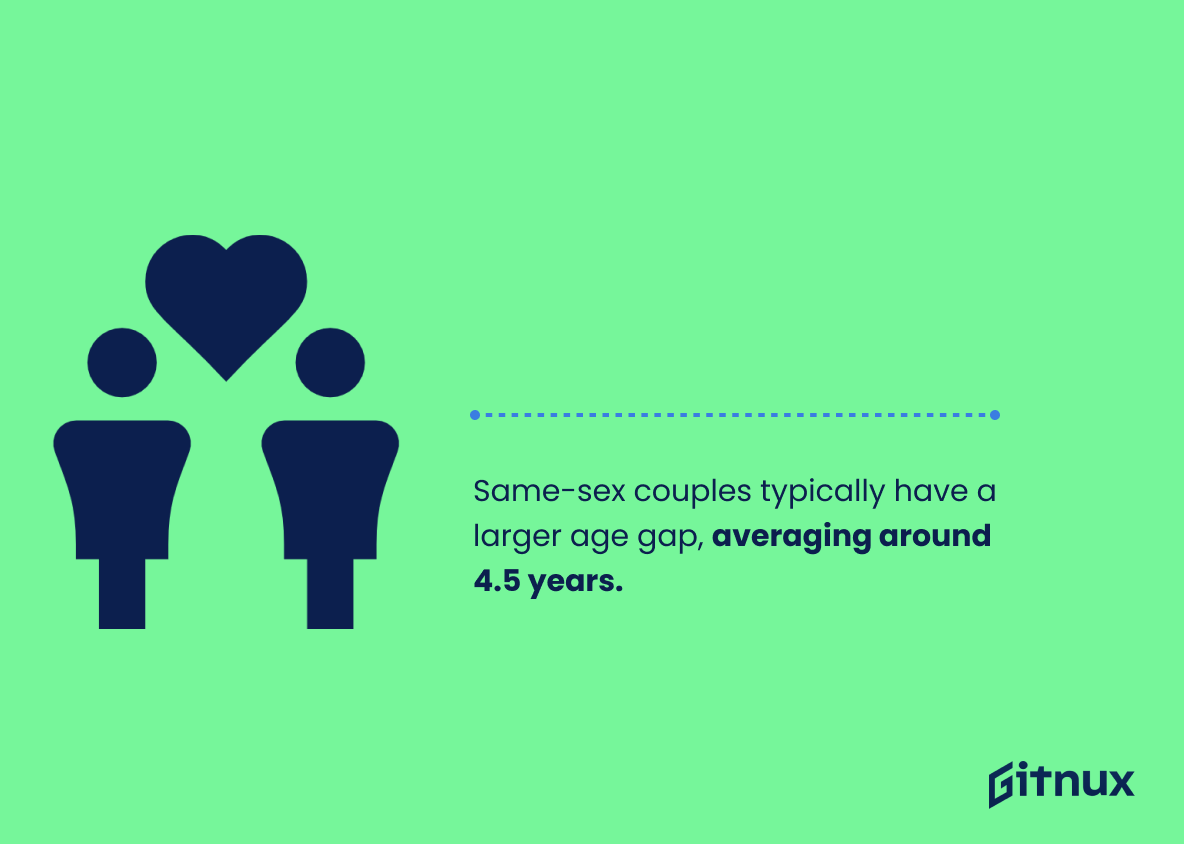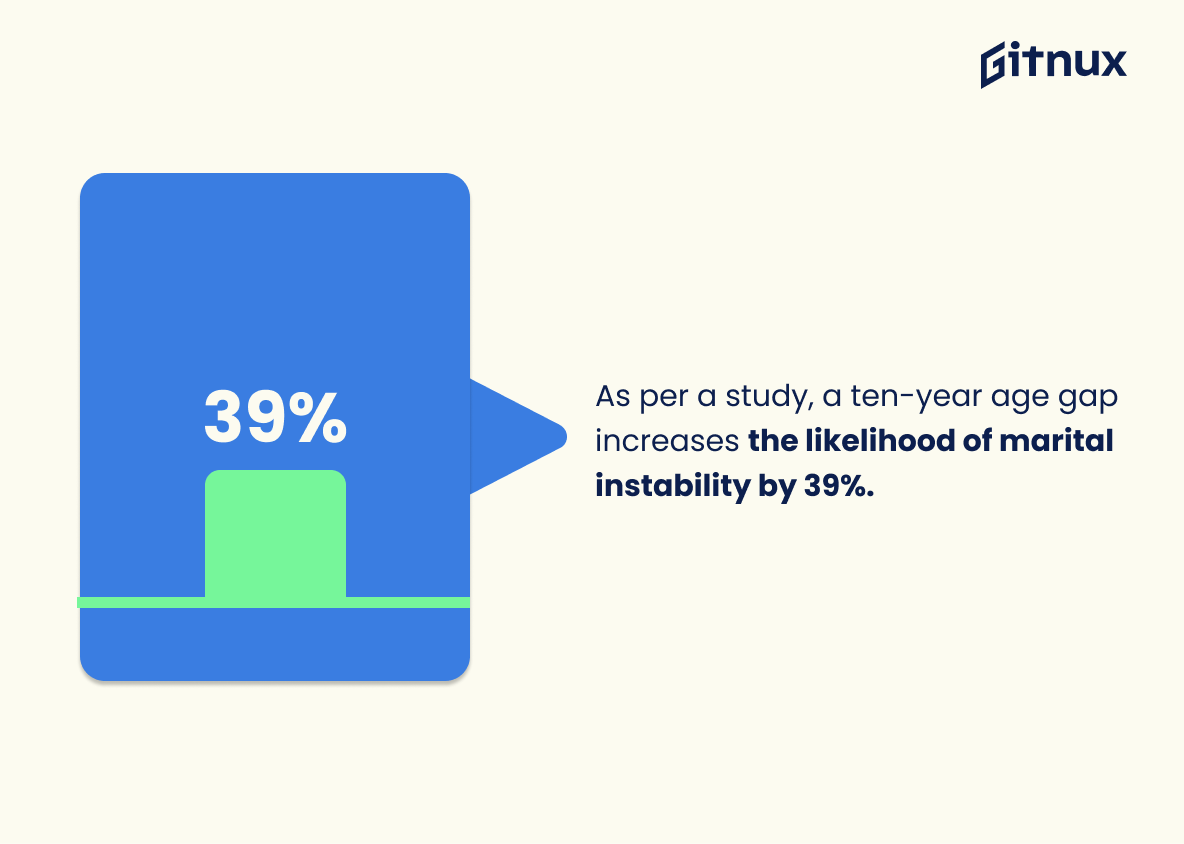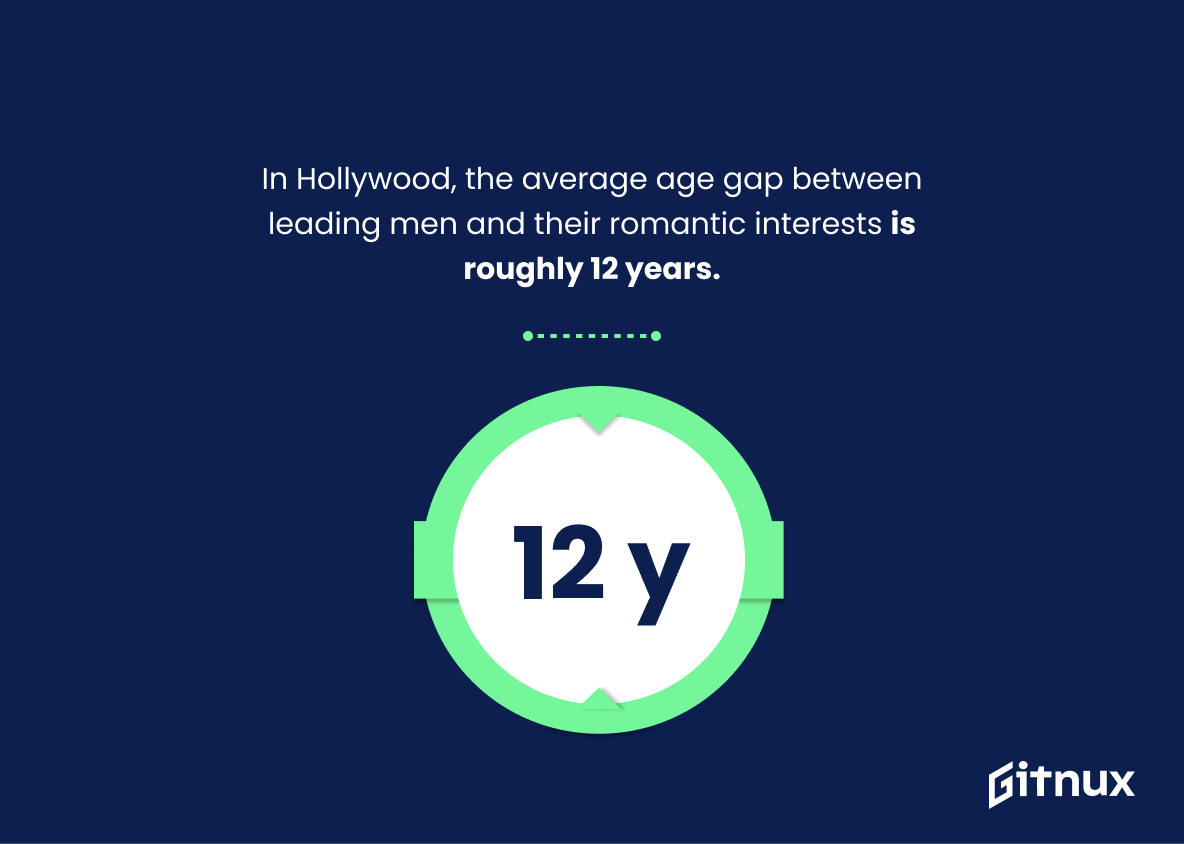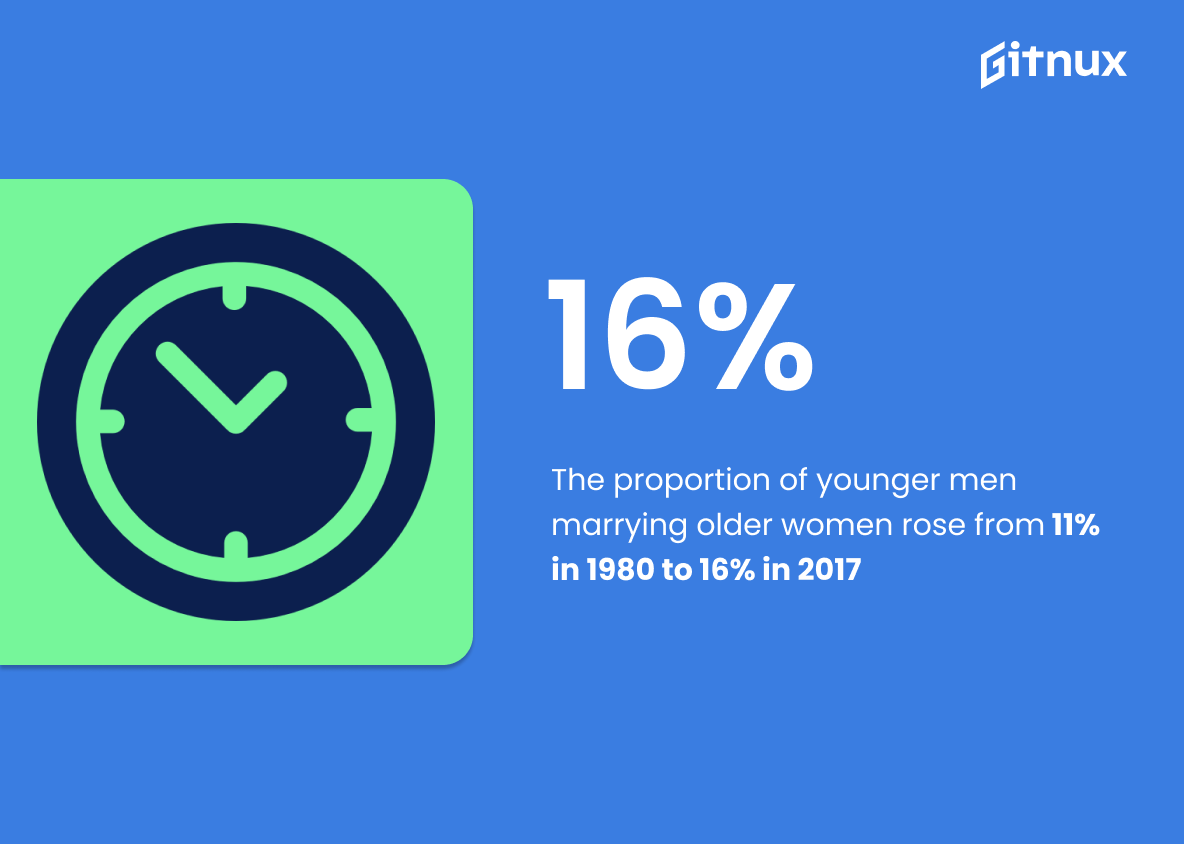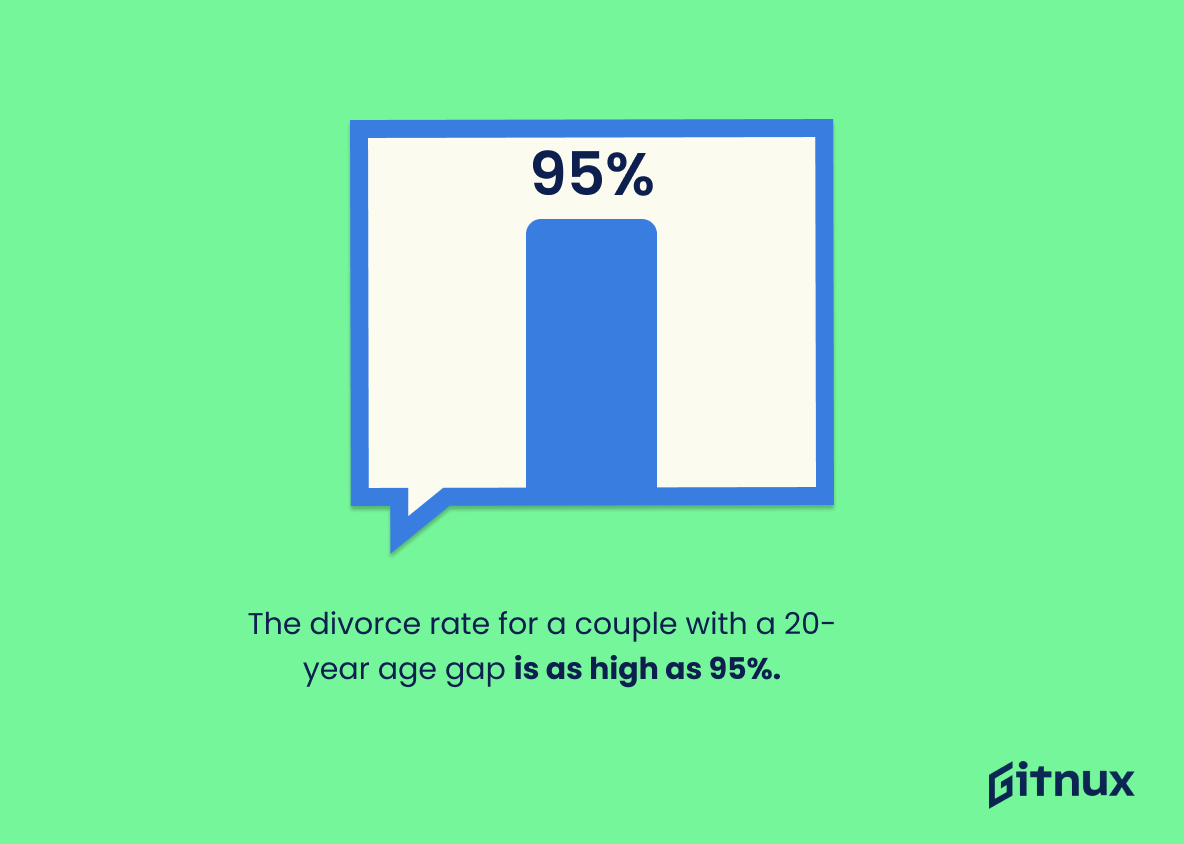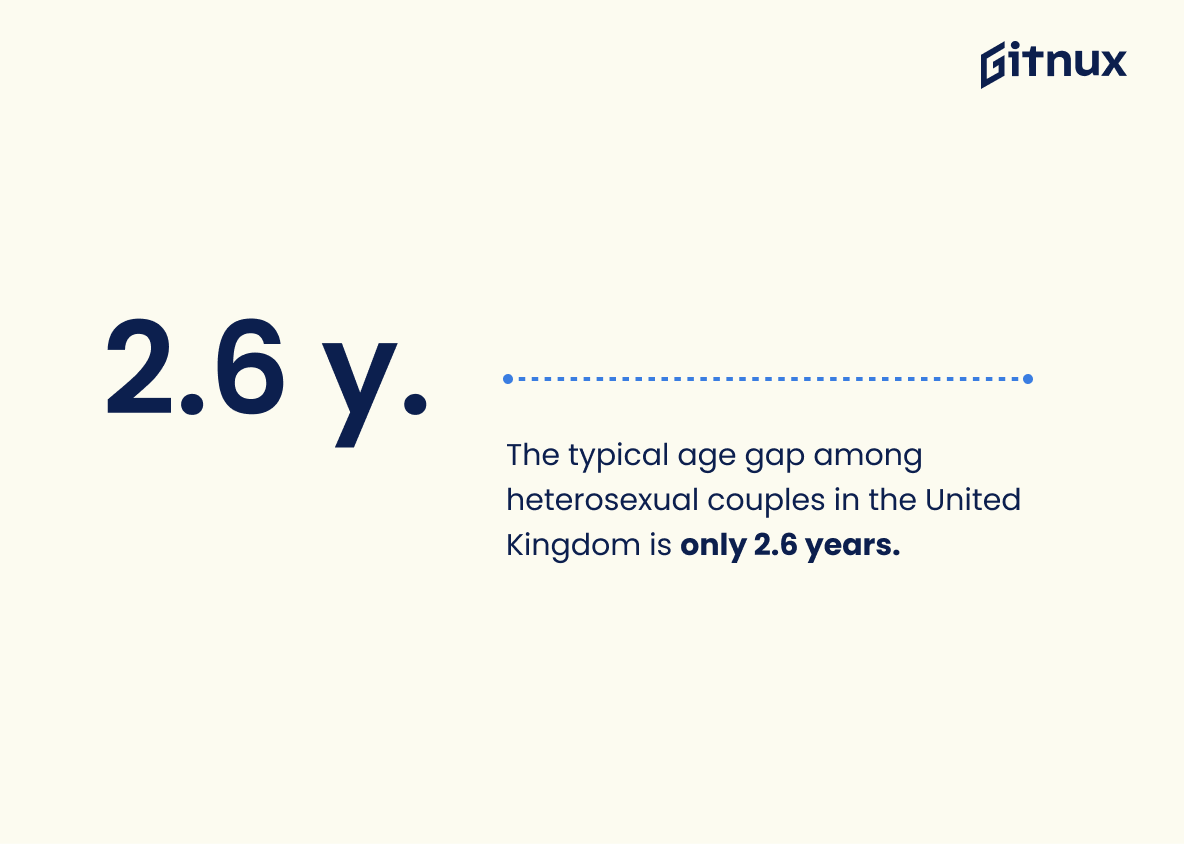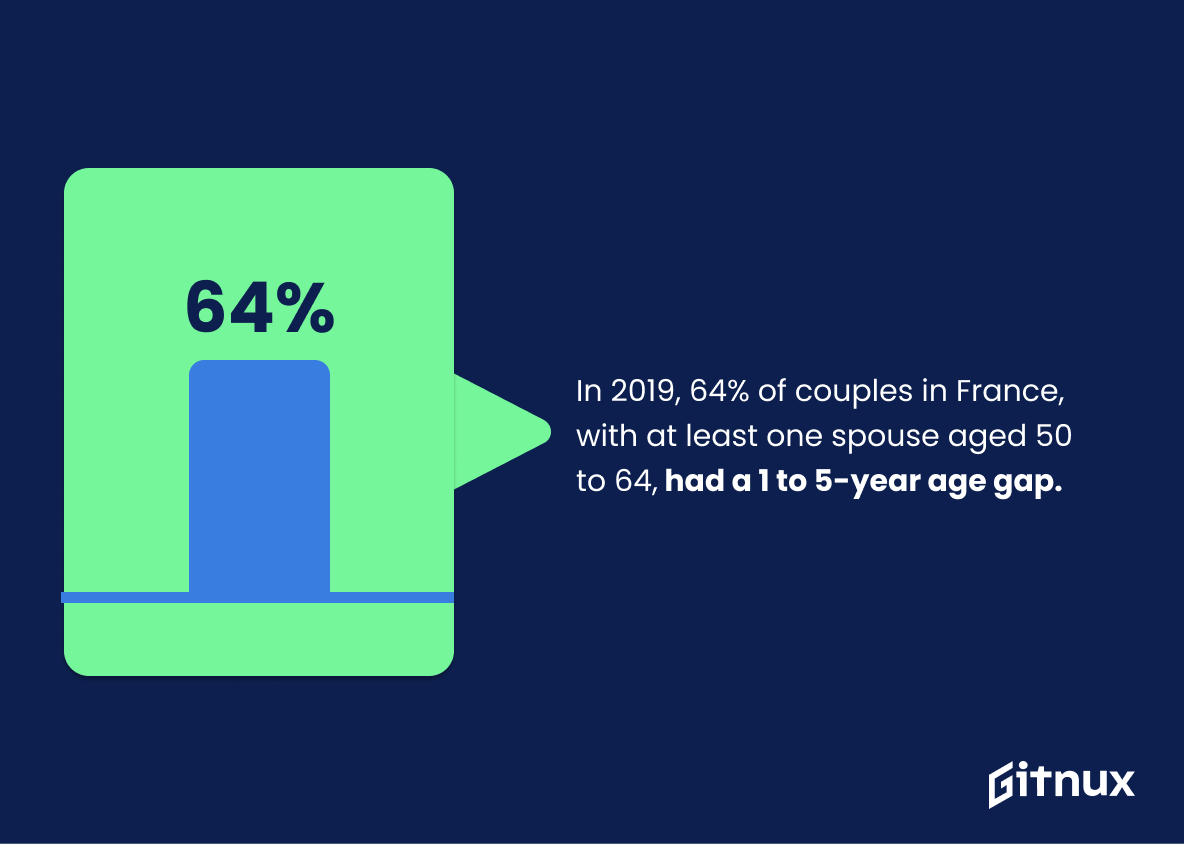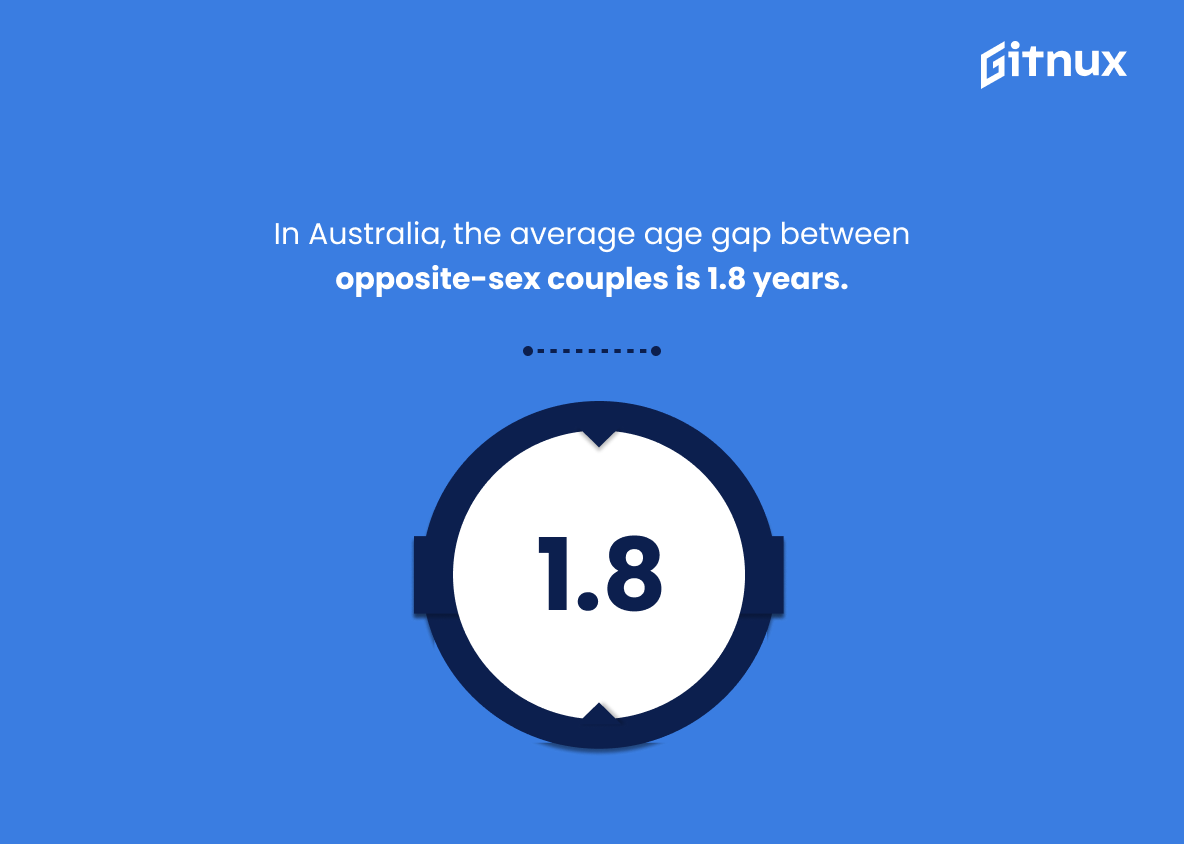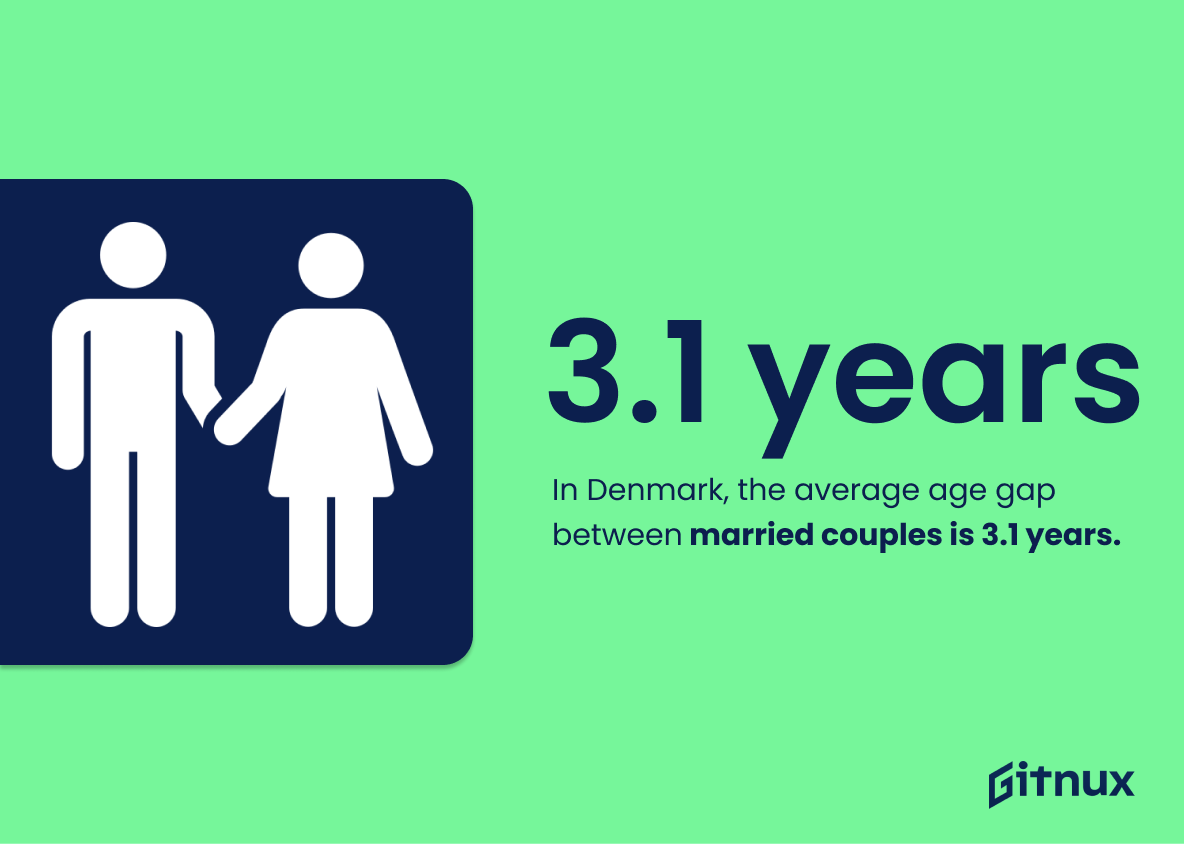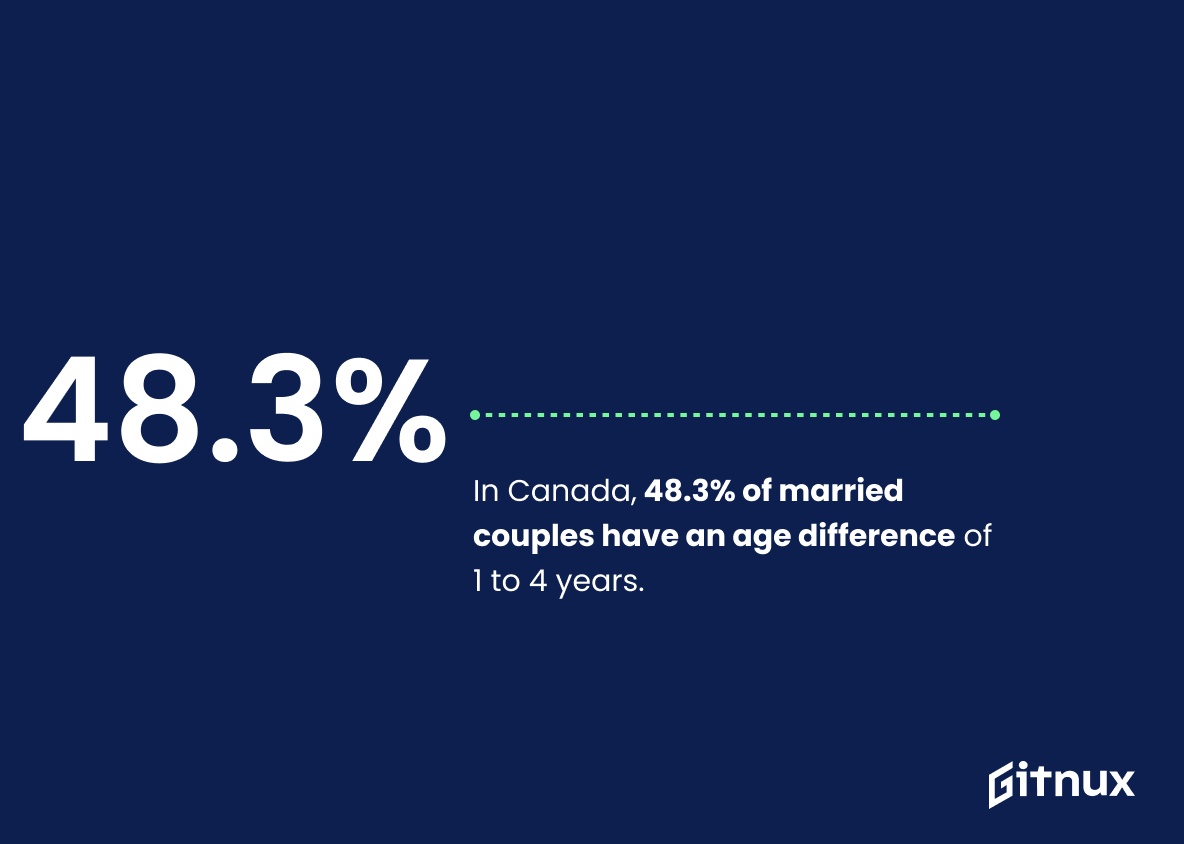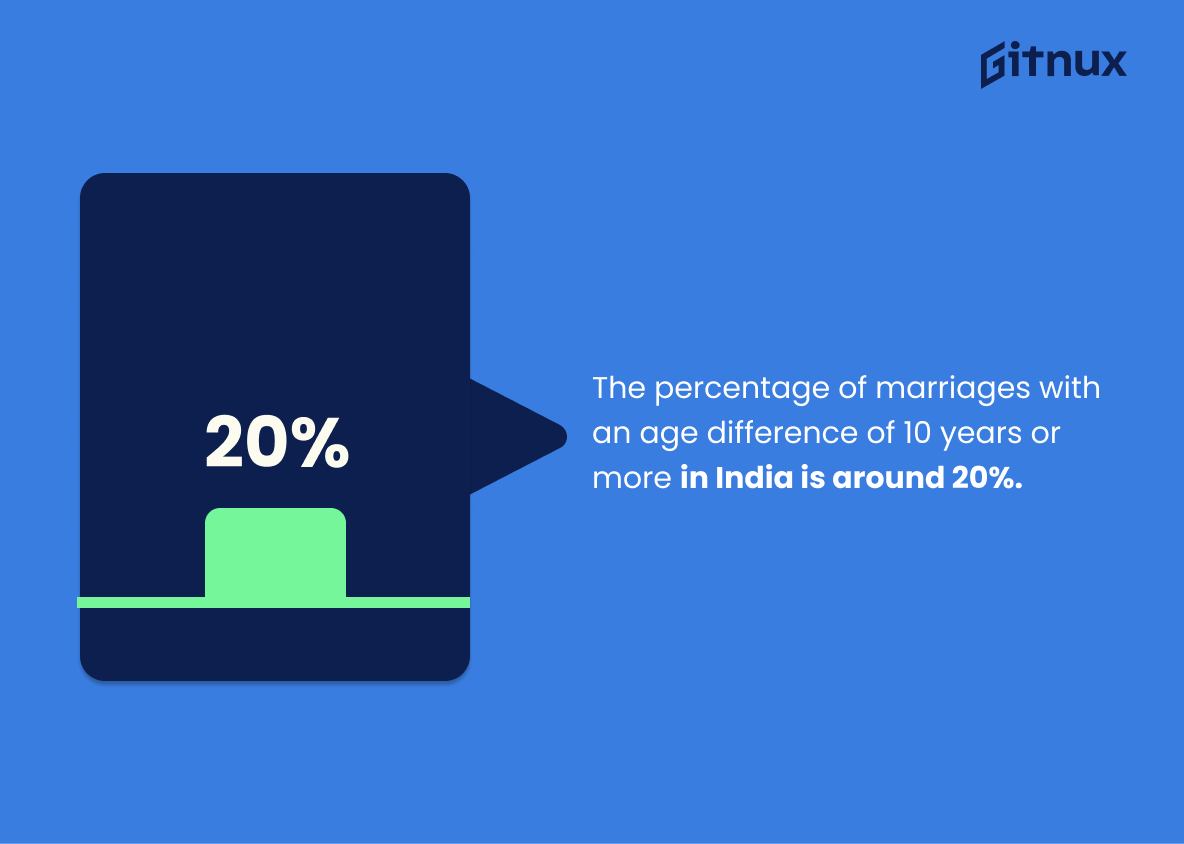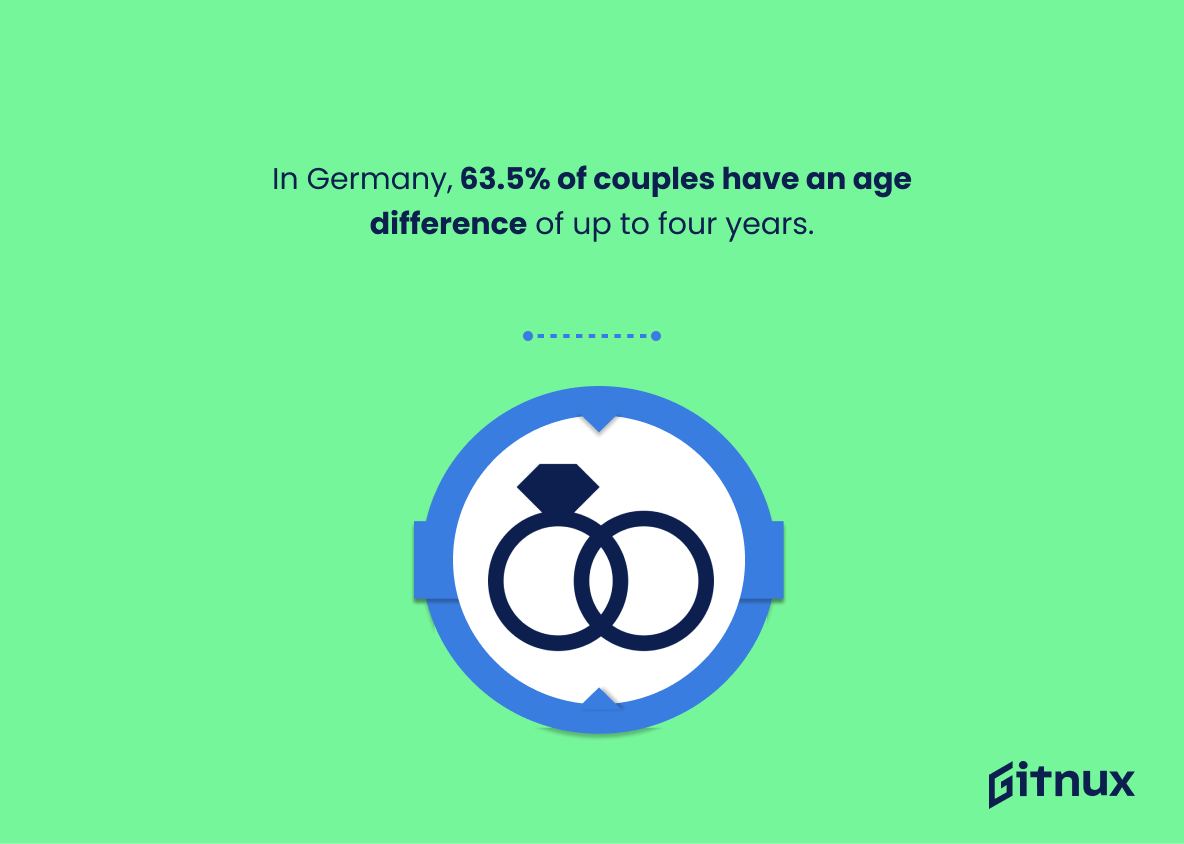Age differences between couples have been a topic of debate for centuries, and the statistics surrounding this issue are fascinating. In this blog post, we will explore 20 different age difference statistics from around the world to gain insight into how these relationships vary by country and culture.
We’ll look at average age gaps in heterosexual couples as well as same-sex couples, optimal ages for lasting marriages, divorce rates based on age gap size, Hollywood’s influence on perceptions of ideal partners’ ages, and more. So let’s dive right in.
Age Difference Between Couples Statistics Overview
In 2013, 25% of American brides married a spouse who was younger or had an age difference of only 1-2 years.
This statistic is a telling indication of the changing attitudes towards age difference in couples. It shows that more and more American brides are now comfortable with marrying someone who is only a few years younger or older than them. This shift in attitude is an important factor to consider when discussing age difference between couples.
The optimal age difference for a lasting marriage is one year, with a divorce rate of 3%, while the rate jumps to 18% when there’s a five-year age gap.
This statistic is a powerful illustration of the importance of age difference in a marriage. It shows that when the age gap is kept to a minimum, the chances of a successful marriage are much higher. On the other hand, when the age difference is five years or more, the divorce rate skyrockets to 18%. This statistic is a valuable insight into the dynamics of age difference in a marriage and should be taken into consideration when discussing the topic.
The average age gap in same-sex couples tends to be larger, with a mean age difference of 4.5 years.
This statistic is significant in the context of a blog post about Age Difference Between Couples Statistics, as it highlights the fact that same-sex couples tend to have a larger age gap than heterosexual couples. This information can be used to inform readers of the potential implications of such an age gap, such as the potential for different life experiences and perspectives, as well as the potential for different levels of maturity.
According to a study, age difference of at least ten years increases the odds of marital instability by 39%.
This statistic is a powerful indicator of the potential for marital instability when there is a large age difference between couples. It highlights the importance of considering age difference when entering into a marriage, as it could have a significant impact on the longevity of the relationship. This statistic is a valuable piece of information for anyone considering a relationship with a large age gap, as it provides a clear warning of the potential risks.
In Hollywood, the average age difference between leading men and their romantic interests is around 12 years.
This statistic is a telling indication of the age gap that is often seen in Hollywood relationships. It highlights the prevalence of older men being paired with younger women, which can be seen as a reflection of the power dynamics that exist in society. This statistic is an important piece of information to consider when discussing age difference between couples, as it provides insight into the societal norms that shape our perceptions of relationships.
The percentage of younger men marrying older women has increased from 11% in 1980 to 16% in 2017.
This statistic is a telling indication of the changing attitudes towards age difference between couples. It shows that more and more younger men are now comfortable with the idea of marrying older women, which is a positive sign for the future of relationships. This statistic is an important piece of evidence that can be used to support the idea that age difference between couples is becoming more accepted in society.
The divorce rate for a couple with a 20-year age gap is as high as 95%.
This statistic is a stark reminder of the potential consequences of a large age gap between couples. It serves as a warning to those considering such a relationship, that the odds of a successful marriage may be stacked against them. It is an important piece of information to consider when discussing the statistics of age difference between couples.
The average age difference between heterosexual couples in the United Kingdom is just 2.6 years.
This statistic is a powerful reminder that age is not a barrier when it comes to finding love. It shows that couples of different ages can find common ground and build a strong relationship, regardless of the age gap between them. This statistic is an important piece of evidence that can be used to support the idea that age difference between couples is not a major factor in determining the success of a relationship.
In 2019, 64% of couples in France with at least one spouse aged 50 to 64 have an age gap of 1 to 5 years.
This statistic is a telling indication of the prevalence of couples with a relatively small age gap in France. It demonstrates that couples in this age range are more likely to have a smaller age gap than couples in other age ranges. This is an important statistic to consider when discussing age difference between couples, as it provides insight into the trends of age gaps in France.
In Australia, the average age gap between opposite-sex couples is 1.8 years.
This statistic is a telling indication of the reality of age difference between couples in Australia. It provides a valuable insight into the average age gap between opposite-sex couples, which can be used to inform discussions about the implications of age difference in relationships.
In Denmark, the average age gap between married couples is 3.1 years.
This statistic is a telling indication of the trend in Denmark when it comes to age difference between married couples. It provides insight into the average age gap that is accepted and embraced by the Danish population, and can be used to compare with other countries to see how Denmark’s age gap between married couples compares. This statistic is an important piece of information for anyone looking to gain a better understanding of the age gap between married couples in Denmark.
In South Korea, couples with an age difference of 5 to 9 years make up 37.7% of all married couples.
This statistic is a telling indication of the prevalence of couples with a relatively small age gap in South Korea. It demonstrates that couples with a 5 to 9 year age difference are a significant portion of the married population, and thus should be taken into account when discussing the age difference between couples.
In Canada, couples with an age difference between 1 and 4 years account for almost half (48.3%) of all married couples.
This statistic is a powerful indicator of the prevalence of couples with a relatively small age gap in Canada. It demonstrates that couples with a slight age difference are the norm, rather than the exception. This is an important point to make in a blog post about Age Difference Between Couples Statistics, as it provides a valuable insight into the current state of relationships in Canada.
The percentage of marriages with an age difference of 10 years or more in India is around 20%.
This statistic is a telling indication of the prevalence of age difference between couples in India. It serves as a reminder that age gaps between partners are not uncommon, and that couples of different ages can still find love and happiness together. This statistic is an important piece of the puzzle when it comes to understanding the dynamics of age difference between couples in India.
In Germany, 63.5% of couples have an age difference of up to four years.
This statistic is a telling indication of the prevalence of couples with a relatively small age gap in Germany. It highlights the fact that age difference is not necessarily a major factor in relationships in the country, with the majority of couples having a gap of four years or less. This is an important point to consider when discussing the overall trend of age difference between couples in the country.
In Japan, the most common age difference between married couples is 1 to 3 years, accounting for 40.3% of marriages.
This statistic is a telling indication of the cultural norms in Japan when it comes to age difference between married couples. It reveals that the majority of marriages in Japan involve couples who are only a few years apart in age, suggesting that this is the accepted norm in the country. This statistic is important to consider when discussing age difference between couples, as it provides insight into the cultural expectations of marriage in Japan.
In Spain, 63.9% of couples have an age difference between 1 and 4 years, with the man being the oldest in the majority of cases.
This statistic is a telling indication of the cultural norms in Spain when it comes to age difference between couples. It shows that the majority of couples in Spain have a relatively small age gap, with the man typically being the older partner. This information is important to consider when discussing the overall trends in age difference between couples, as it provides insight into the cultural expectations and norms in Spain.
Conclusion
From the statistics presented, it is clear that age differences between couples vary from country to country. In general, most heterosexual couples have an average age difference of 2-3 years with the man being older in 64% of cases.
However, same-sex couples tend to have a larger mean age gap (4.5 years). The optimal age difference for a lasting marriage appears to be one year and when women marry someone who is ten or more years older than them there tends to be lower relationship satisfaction levels compared with those in similar aged relationships. Additionally, marriages where there is at least a 10 year gap are much less likely to last as evidenced by their high divorce rate (95%).
References
0. – https://www.www.scb.se
1. – https://www.www.ine.es
2. – https://www.www.e-stat.go.jp
3. – https://www.scroll.in
4. – https://www.www.destatis.de
5. – https://www.kosis.kr
6. – https://www.www.businessinsider.com
7. – https://www.www.newrepublic.com
8. – https://www.www.abs.gov.au
9. – https://www.www.emerald.com
10. – https://www.www.rand.org
11. – https://www.str.llnl.gov
12. – https://www.www.ncbi.nlm.nih.gov
13. – https://www.www.insee.fr
14. – https://www.www.ons.gov.uk
15. – https://www.www.statista.com
16. – https://www.www150.statcan.gc.ca


